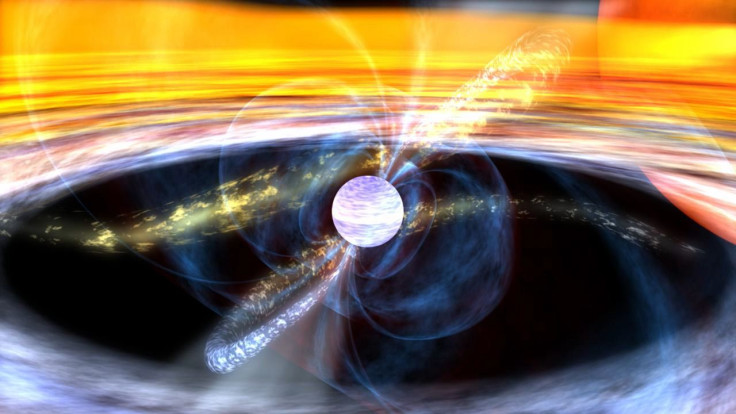Space-Time Warp Hides Massive Pulsar From View After It Tips Into A 'Gravitational Well'

A warp in the fabric of space-time has caused a pulsar in a binary star system about 25,000 light-years from Earth to vanish, at least for now, according to a team of scientists who had been monitoring the star system for over five years. The scientists reportedly estimate that the pulsar would be visible again in another 160 years after it emerges from the “gravitational well” created by its mass and rotation.
Pulsars are rotating neutron stars, which are immensely dense stars created as a result of a massive star collapsing in on itself. As a pulsar rotates, it emits high-energy radiation, similar to lighthouse casting beams of light. If this beam of high-energy radiation is pointed toward the Earth, these high-energy pulses can be detected using radio telescopes.
The specimen, under observation, is part of a binary star system, named J1906, which was discovered in 2004 using the Arecibo Observatory in Puerto Rico. Researchers had been studying the pulsar, which was found to have an orbital period of four hours, to determine what kind of a companion star it orbits. That is, until the pulsar vanished unexpectedly.
“These two stars each weigh more than the sun, but are still over 100 times closer together than the Earth is to the sun,” Ingrid Stairs from the University of British Columbia, Canada, and a co-author of the findings published in The Astrophysical Journal, reportedly said. “The resulting extreme gravity causes many remarkable effects.”
One of these “remarkable effects” is a phenomenon known as “geodetic precession.” According to NASA, precession occurs when the curvature of space-time is warped by the gravity and rotation of a celestial body. As the warp increases, the body -- in this case, the pulsar -- starts wobbling and its axis of rotation shifts.
The scientists observing the pulsar said, in a statement, that as a result of the immense mutual gravitational pull created by the binary star system, the beams of radiation emitted by the pulsar were no longer aimed toward Earth.
“The pulsar is now all but invisible to even the largest telescopes on Earth. This is the first time such a young pulsar has disappeared through precession,” Joeri van Leeuwen, an astrophysicist at The Netherlands Institute for Radio Astronomy and University of Amsterdam, who led the study, said in the statement. “Fortunately this cosmic spinning top is expected to wobble back into view … but it might take as long as 160 years.”
© Copyright IBTimes 2024. All rights reserved.






















